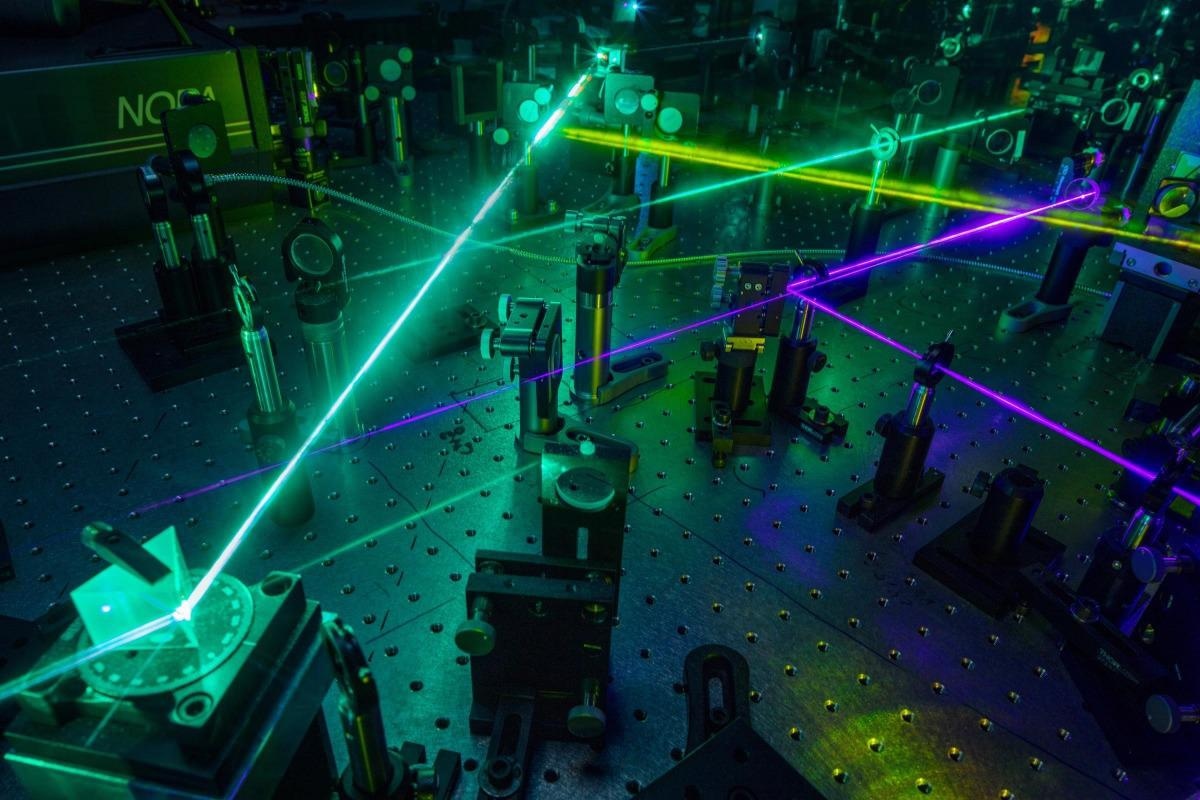Numerous semiconducting materials are being considered as possible candidates for making solar cells. Over the past few years, perovskite semiconductors — in particular — have gained attention, as they are both simple and affordable to process and allow high efficiencies.
 In the femtosecond laser laboratory of Dr. Dennis Friedrich at HZB, the transport properties of semiconductors can be determined using terahertz or microwave spectroscopy. For this purpose, a laser light pulse first excites the charge carriers in the material, which are then irradiated with electromagnetic waves (either THz or Microwave) and absorb some of them. Image Credit: © Helmholtz Zentrum Berlin.
In the femtosecond laser laboratory of Dr. Dennis Friedrich at HZB, the transport properties of semiconductors can be determined using terahertz or microwave spectroscopy. For this purpose, a laser light pulse first excites the charge carriers in the material, which are then irradiated with electromagnetic waves (either THz or Microwave) and absorb some of them. Image Credit: © Helmholtz Zentrum Berlin.
At present, a study with 15 participating research institutions has illustrated how terahertz (TRTS) and microwave spectroscopy (TRMC) can be utilized to dependably identify the mobility and lifetime of the charge carriers in the latest semiconducting materials.
With the help of this measurement data, it is possible to foretell the possible efficiency of the solar cell in advance and to classify the losses in the finished cell.
The most significant properties of a semiconductor to be utilized as a solar cell consist of the mobility and lifetime of electrons and “holes.” Quantities of both can be measured without contact with spectroscopic methods utilizing terahertz or microwave radiation. Yet, measurement data found in literature frequently differs by orders of magnitude. This has made it hard to use it for certain assessments of material quality.
Reference Samples Measured
We wanted to get to the bottom of these differences, and contacted experts from a total of 15 international laboratories to analyze typical sources of error and problems with the measurements.
Dr. Hannes Hempel, Helmholtz Zentrum Berlin
Dr. Hannes Hempel is a member of the HZB team led by Dr. Thomas Unold.
The HZB physicists distributed reference samples generated by Dr. Martin Stolterfoht’s group at the University of Potsdam to each laboratory containing the improved perovskite semiconductor compound (Cs, FA, MA) Pb(I, Br)3).
Better Data for Better Prediction
One result of the collaborative work is the considerably more precise determination of the transport properties via microwave or terahertz spectroscopy.
We could identify some neuralgic points that have to be considered before the actual measurements takes place, which allows us to arrive at significantly better agreement of the results.
Dr. Hannes Hempel, Helmholtz Zentrum Berlin
Another result of the study showed that the characteristics of the solar cell can also be assessed more accurately with reliable measurement data and highly advanced analysis.
We believe that this analysis is of great interest for photovoltaic research, because it predicts the maximum possible efficiency of the material in a solar cell and reveals the influence of various loss mechanisms, such as transport barriers.
Thomas Unold, Helmholtz Zentrum Berlin
This not only applies to the material class of perovskite semiconductors but also to other new semiconducting materials, which can hence be tested more rapidly for their potential suitability.
Journal Reference:
Hempel, H., et al. (2022) Predicting Solar Cell Performance from Terahertz and Microwave Spectroscopy. Advanced Energy Materials. doi.org/10.1002/aenm.202102776.